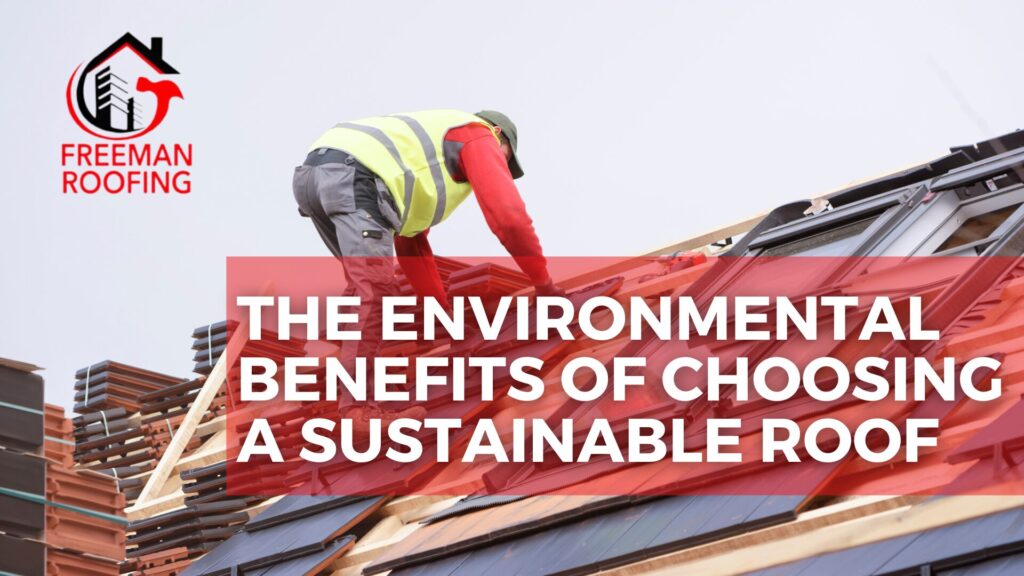The Environmental Benefits of Choosing a Sustainable Roof

Go Green, Get a Green Roof: The Environmental Benefits of Sustainable Roofing
Tired of feeling guilty about your carbon footprint? Want to make your home a little greener? Then it’s time to consider a sustainable roof! These eco-friendly options are not only good for the planet, but they can also save you money and increase your home’s value. Let’s delve into the why and how of sustainable roofing, exploring the environmental benefits they offer.
Why Choose a Sustainable Roof?
Going green on your roof offers a range of environmental benefits. In fact, sustainable roofing practices can significantly reduce your environmental impact. Here’s how:
Energy Savings: Keep Your Cool (and Your Bills Low)
Cool roofs are designed to reflect sunlight and absorb less heat, keeping your home cooler in the summer. Consequently, this translates to less strain on your air conditioner, resulting in lower energy bills and a smaller carbon footprint. Check out our guide on cool roofing options to learn more.
Cleaner Air: Breathe Easy
Moving on to another significant benefit, vegetated roofs, also known as green roofs, act like tiny urban parks. They absorb pollutants from the air, improving air quality for everyone in the neighborhood. After all, cleaner air means a healthier environment for all.
Water Wise: Reducing Storm water Runoff
Furthermore, green roofs also help to reduce storm water runoff, which can overwhelm city drainage systems and contribute to flooding. By absorbing rainwater, they help to replenish the water table and prevent erosion. In essence, green roofs promote sustainable water management.
Less Waste, More Reuse: Recycling Rocks!
Additionally, many sustainable roofing materials, such as metal roofs and recycled rubber roofs, are made from recycled materials. Plus, they can often be recycled again at the end of their lifespan, keeping them out of landfills. This focus on recycled materials makes sustainable roofing a win for the environment.
Wildlife Haven: Create a Rooftop Oasis
Finally, green roofs provide a habitat for plants and insects, increasing biodiversity in urban areas. It’s like having a mini-ecosystem right on your doorstep! This not only benefits wildlife but also creates a more vibrant and ecologically balanced environment.
Sustainable Roofing Materials: Eco-Friendly Options
Ready to go green? Here are some eco-friendly roofing options to consider:
- Metal Roofs: Crafted from recycled materials like aluminum or steel, metal roofs are incredibly durable, energy-efficient, and 100% recyclable.
- Recycled Rubber Roofs: These roofs are made from recycled tires and other rubber materials, giving new life to old materials.
- Cool Roofs: These innovative roofs are designed to reflect sunlight and keep your home cooler.
- Vegetated Roofs (Green Roofs): These roofs are covered in vegetation, creating a living, breathing rooftop garden. You can find more information on green roofs at the Green Roofs for Healthy Cities website.
- Solar Roofs: While not strictly roofing materials, solar panels integrated into your roof can significantly reduce your carbon footprint by generating renewable energy.
The Bottom Line
Choosing a sustainable roof is an investment in a greener future for yourself and your community. By making eco-conscious choices, you can reduce your environmental impact, save energy, and enjoy the peace of mind that comes with making a responsible choice. Sustainable roofing is a win-win for the environment and your wallet.
